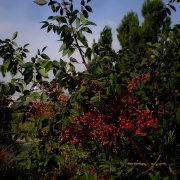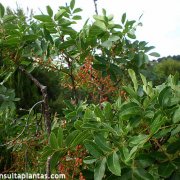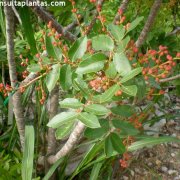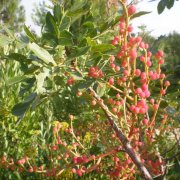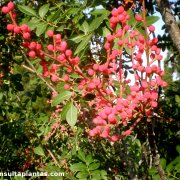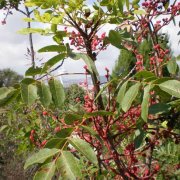Care of the tree Pistacia terebinthus or Terebinth |
|
The genus Pistacia, family Anacardiaceae, comprises 10 species of trees and shrubs native to the Mediterranean region, the Canary Islands, central Asia, Mexico and the southern United States. Some species are: Pistacia terebinthus, Pistacia lentiscus, Pistacia chinensis, Pistacia mexicana, Pistacia vera, Pistacia atlantica. Common names: Terebinth, Turpentine tree. This species is native to the Mediterranean region. They are small dioecious deciduous trees or shrubs that reach 6 meters (19.68 feet) in height. They have bright green, compound and odd-pinnate leaves. The flowers appear in clusters, they are small and reddish. They bloom during the first half of spring. The decorative fruits are first red and later black. Terebinth is used as colonizing plants in dry areas of the garden with low maintenance, as isolated specimens and in bushy groups. Turpentine oil is extracted from this plant and the bark was used as a medicine in the past. Pistacia terebinthus prefers full sun exposure and high temperatures. It resists frost well. Turpentine tree can grow in limestone, poor and stony soils but not in clayey and humid soils. Always water moderately, waiting until the substrate has completely dried; Pistacia terebinthus resists drought well. Terebinth does not need fertilizers. Prune lightly in late winter to control growth. Pistacia terebinthus is a plant resistant to pests and diseases. Some insects produce galls that do not affect the health of the plant. Turpentine tree is propagated from seeds sown in fall or spring and by division in spring. |
Images of the tree Pistacia terebinthus or Terebinth |
Find plants
Pistacia terebinthus or Terebinth | Care and Growing
© 2026 FavThemes
